2011 DOE Fellows Summer Internships
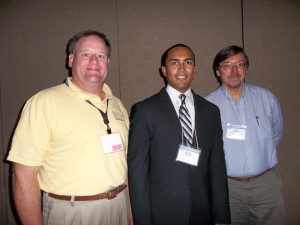
Finalist and DOE Fellow, William Mendez with mentor Mark Noakes (right) at the 3rd Annual Joint Topical Conference on Emergency Preparedness & Response and Robotics and Remote Systems
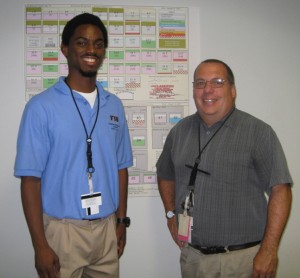
DOE Fellow Givens Cherilus and his mentor Alex Cozzi at Savannah River Site
| Savannah River Site, SC |
- William Mendez INTERNSHIP TECHNICHAL REPORT:
Formed Core Sampler DOE Fellow William Mendez interned at the Savannah River Site owned by the United States Department of Energy (DOE) and managed by Savannah River Nuclear Solutions LLC (SRNS). During his internship, Mr. Mendez assisted researchers at SRS with two different projects: the testing of the Form Core Sampler System and the development of a new Cell Buret Drive System for Saltstone and the Defense Waste Processing Facility (DWPF), respectively. The Form Core Sampling System is being developed by SRNL to take grout samples from the Saltstone monoliths at varying elevations for analysis. A full scale mock-up of the sampling system, as illustrated in Figure 1, has been built and installed at the Research & Development Engineering facility highbay. Saltstone grout simulant is being poured in multiple lifts to simulate the process in the Saltstone facility. After all the grout pours are complete, the material will be allowed to cure for six weeks, at which time the samplers will be removed from the sampler sleeve for analysis.
DOE Fellow William Mendez interned at the Savannah River Site owned by the United States Department of Energy (DOE) and managed by Savannah River Nuclear Solutions LLC (SRNS). During his internship, Mr. Mendez assisted researchers at SRS with two different projects: the testing of the Form Core Sampler System and the development of a new Cell Buret Drive System for Saltstone and the Defense Waste Processing Facility (DWPF), respectively. The Form Core Sampling System is being developed by SRNL to take grout samples from the Saltstone monoliths at varying elevations for analysis. A full scale mock-up of the sampling system, as illustrated in Figure 1, has been built and installed at the Research & Development Engineering facility highbay. Saltstone grout simulant is being poured in multiple lifts to simulate the process in the Saltstone facility. After all the grout pours are complete, the material will be allowed to cure for six weeks, at which time the samplers will be removed from the sampler sleeve for analysis.
Mr. Mendez also assisted in the design of the second generation of the sampler sleeve system and sampler installation equipment to include improvements identified during testing.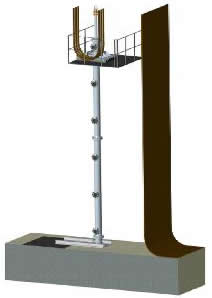
Figure 1 Form Core Sampler
The need for a new Cell Buret Drive System emerged after recent changes in the communication protocol between the titrator controller and the in-cell buret drive. Mr. Mendez assisted in the development of a new Cell Buret Drive System (Figure 2) that will allow for its remotely controlled operations within a shielded cell. The cell buret is used in the analysis of sludge samples collected from the waste tanks.
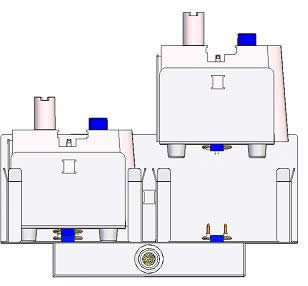
Figure 2 Cell Buret Drive System
- Givens Cherilus
INTERNSHIP TECHNICHAL REPORT:
Saltstone Liquid Permeability and Formed Core Grout Sampler
DOE Fellow Givens Cherilus interned at Savannah River Site under mentor Alex Cozzi. As part of the SRNL support of the Z-Area Saltstone facility, a program is underway to evaluate different vault pouring strategies (curing conditions) on various properties of the grout. One of the tasks was to measure the hydraulic conductivity of saltstone samples made with simulated waste salt solution using ASTM D 6527. Subtasks associated with this task include: centrifuge permeability, prepare simulated Saltstone samples, test the permeability using centrifuge, prepare multiple permeants, test the permeability of samples as a function of permeant used, document results in a report, and prepare a final presentation to the customer.
| Savannah River National Laboratory, SC |
- Amaury Betancourt INTERNSHIP TECHNICHAL REPORT:
Tin Distribution and Fate in Tims Branch at the Savannah River Site
DOE Fellow Amaury Betancourt recently graduated in the Spring of 2011 from Florida International University (FIU) with a Master of Science (M.S.) degree in environmental engineering. Mr. Betancourt interned at the United States Department of Energy (DOE) Savannah River National Laboratory (SRNL) in South Carolina. During his 10-week internship at SRNL, Mr. Betancourt assisted SRNL scientist Dr. Brian B. Looney in evaluating the effects of an innovative mercury remediation strategy on a real ecosystem.
Historically, industrial operations in the A/M Area of the SRS released chlorinated solvents into the environment. In 1985, a groundwater extraction and air stripper system was set up to remove chlorinated solvents from the subsurface. The treated groundwater is discharged to headwaters of Tims Branch. The full scale M-1 air stripper has operated continuously since start up in 1985. In 2007, a supplementary process was added to treat the trace mercury co-contamination (approximately 250 nanograms per liter, ng/L) that is present in the groundwater. This system adds tin chloride (SnCl2, or stannous chloride) to the groundwater entering the air stripper. Tin chloride chemically reduces dissolved ionic mercury mercury (e.g., Hg2+) to elemental mercury (Hg0), which is more volatile and which can then be removed from the groundwater by the air stripper. Since 2007, mercury levels in the treated groundwater released to Tims Branch have dropped to approximately 10 ng/L.
Operation of the mercury treatment system results in the release of inorganic tin to the headwaters of Tims Branch. Research related to the behavior and fate of this tin is important to assessing the net effectiveness of the process. Mr. Betancourt is assisting Dr. Brian B. Looney of the SRNL in taking samples of the sediments and water along Tims Branch and determining the distribution of tin along Tims Branch. Furthermore, fish samples from 2006 and 2010, which represent times before and after tin chloride treatment, respectively, will be analyzed for tin and mercury and compared. This research project allows the study of the relatively long-term (three and a half years) effects of this remediation strategy on a real ecosystem. The primary goal of the present research is to determine if tin accumulation in Tims Branch is adversely impacting the ecosystem. Research that demonstrates positive impacts, such as lower mercury concentration in fish, and minimal negative impacts, such as minimal tin uptake, would support the treatment concept and the potential for implementation at similar sites that are contaminated with mercury, including the East Fork Poplar Creek (EFPC) in Oak Ridge, Tennessee.

Amaury Betancourt
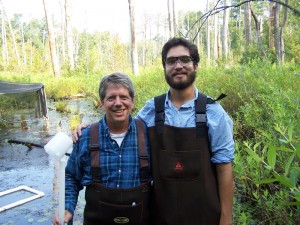
Amaury Betancourt and his mentor Dr. Brian Looney
| DOE Headquarters |

DOE Fellows with Sheidyn and Heidi at Washington, D.C.
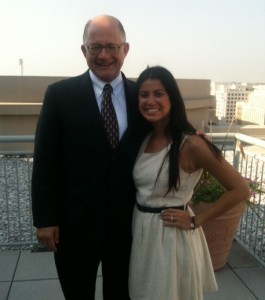
DOE Fellow, Sheidyn Ng, with FIU President Dr. Mark Rosenberg
Sheidyn Ng
INTERNSHIP TECHNICHAL REPORT:
U.S. Department of Energy Headquarters Environmental Management (EM-20) Office of Safety and Security Program ![]()
DOE Fellow Sheidyn Ng worked with the U.S. Department of Energy Headquarters (DOE-HQ) for the Environmental Management Office of Safety and Security Program (EM-20) under the mentorship of Mr. Kenneth Picha. The mission of the Office of Safety & Security Program (EM-20) is to manage DOE/EM-wide Integrated Safety Management implementation oversight activities, the Defense Nuclear Facilities Safety Board (DNFSB) recommendations and issues, standards assurance for major project planning and execution, operational safety and awareness programs, and quality assurance programs. Sheidyn will be assisting in communication between safety national laboratory personnel and DOE, analyzing DOE contractors safety programs, organizing memorandum archives, and national laboratory personnel training programs. These tasks ensure the integrity and efficiency of the EM-20 mission and function.
Heidi Henderson
DOE Fellow Heidi Henderson interned this summer with Ana Han in Foreign Affairs, Office of Environmental Management (EM-30). Ms. Hernderson coordinated EM’s participation in the International Conference on Environmental Remediation and Radioactive Waste Management (ICEM) 2011 that will take place in Reims, France, this September. Heidi assisted in keeping EM updated on foreign visits and foreign travel that takes place within the EM Department as well as attending EM meetings. She was very pleased with her experience.
INTERNSHIP TECHNICHAL REPORT:
Office of Environmental Management International Program ![]()
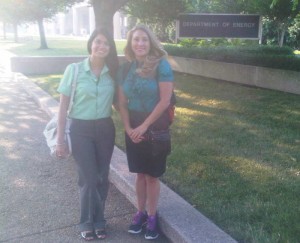
DOE Fellows with Sheidyn and Heidi at Washington, D.C

DOE Fellow, Heidi Henderson, with her mentor Ana Han (left) and her boss Ivette Collazo (right)
| Lawrence Livermore National Laboratory, CA |
- Mario Vargas
INTERNSHIP TECHNICHAL REPORT:
Air Flow Calculations for the Centralized Waste Processing Line (CWPL) Glovebox
Mentor: Alan Goldner
Supervisor: John Kerns / Mark Bronson
Directorate: Weapons and Complex Integration (WCI)
LLNL is as a research and development institution for science and technology directly applied to national security. Its responsibility is ensuring the safety, security and reliability of the nation’s nuclear weapons through the application of advanced science, engineering and technology. The Laboratory also applies its special expertise and multidisciplinary capabilities to preventing the proliferation and use of weapons of mass destruction, bolstering homeland security and solving other nationally important problems, including energy and environmental security, basic science and economic competitiveness.
Mario Vargas, DOE Fellow, was assigned to work under the the Nuclear Materials Technology Program (NMTP). NMTP works to assure the safety and reliability of the nation’s nuclear stockpile. NMTP provides management of all special nuclear material operations at the Laboratory, including those involving highly enriched uranium, plutonium, and tritium. This work is conducted at LLNL’s Superblock facility, one of just two defense plutonium research and development facilities in the U.S.
Mario’s work is on the design of the airflow system of a glove box capable of processing transuranic waste barrels. The glove box’s vitalization system will be designed to always displace air into the clean section of the glove box and then into the contaminated section. That ensures that no loose contamination is able to exit when the doors are open. Because workers will be present and in close proximity to the glove box, all the air flowing around them must also flow past them and into the glove box. In order to test the amount of air and the direction of air flow around the open doors, smoke testing will be conducted. The qualitative data gathered from the smoke testing will be used to validate the data gathered from the calculation end of the project. There always needs to be a flow of 500 cfm in the glove box, whether it’s in the ducting or through the open doors. The current task being worked on is to determine the pressure drop throughout the system and to incorporate the proper means of maintaining the required flow rate if it were to have a substantial drop. Each section of the duct is being evaluated in each of the eight possible open door configurations.
| Oak Ridge National Laboratory, TN |
- Stephen Wood DOE Fellow Stephen Wood is preparing to start in the Energy Science and Engineering PhD Fellowship at the University of Tennessee in Knoxville. He completed a Masters degree in Mechanical Engineering at Florida International University. He is dedicated to advancing the models and techniques of multi-disciplinary design and optimization. Stephen volunteered as the Lab Manager of the Multidisciplinary Analysis, Inverse Design, Robust Optimization and Control (MAIDROC) Laboratory at FIU. This volunteer service allowed Stephen to develop technical skills to facilitate his research as he supported a variety of computational research projects from within the FIU community.
Stephen previously interned at Oak Ridge National Laboratory during the summer of 2009 under the mentorship of Dr. Ralf Deiterding, where he validated and extended the functionality of AMROC-DYNA within the Virtual Test Facility, a Fluid-Structure Interaction simulation suite. During the Research Alliance in Math and Science (RAMS) 2011 Internship this past summer, Stephen continued working on the development of the AMROC-DYNA framework. The verification configurations were rather prototypical. In 2009 he investigated the impact of a planar shock on a homogeneous elastic steel panel and the bulging of a thin aluminum plate. In 2011 he studied configurations that are closer to realistic blast wave scenarios to answer questions such as: How will the blast wave propagate through a building if an explosion occurs in front of it? What is the loading on the structure? Which wall will fail first and how should it be improved? He also investigated if the spread and impact of small fragments driven by a blast wave can be simulated by AMROC-DYNA and how well the code scaled for complicated geometries and blasts.
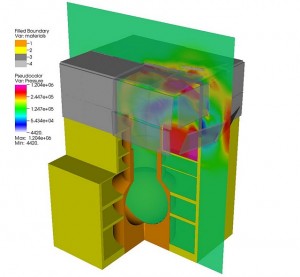
Stephen’s RAMS research 2011
| Moab Site, Utah |
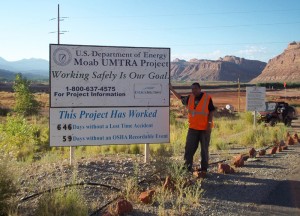
DOE Fellow Alex Henao at the U.S. Department of Energy Moab Site in Utah
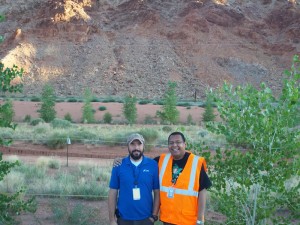
DOE Fellows Alex Henao with his mentor Mr. Ryan Barker
Alexander Henao
INTERNSHIP TECHNICHAL REPORT:
DOE Fellow Alexander Henao interned at the Moab Site in Utah, a national laboratory under the U.S. Department of Energy. Mr. Henao was under the mentorship of Ryan Barker, the Re-vegetation Manager, and Ken Pill, the Ground Water Program Manager. Mr. Henao’s duties included assisting in developing soil collection and analysis protocols for use in wildland restoration planning; assisting in developing vegetative cover sampling protocols; actual data collection and analysis of the data; assisting in wildlife surveys that will include visual transects, wildlife trapping, and monitoring infrared cameras; assisting with surface and ground water sampling; monitoring ground water changes in ground water chemistry as the river stage decreases after the peak runoff; performing a literature search for historical ammonia and nitrate concentrations at the site; and investigating different scenarios using the ground water flow model.
| Pacific Northwest National Laboratory, WA |
- Rinaldo Gonzalez
INTERNSHIP TECHNICHAL REPORT:
Soil Mesh Optimization and Preliminary FEA Study of Tank-to-Tank Interaction for Hanford Type IV SSTFor the summer of 2011, DOE Fellow Rinaldo Gonzalez participated in the Single Shell Tank (SST) Structural Integrity Project at Pacific Northwest National Laboratory (PNNL). He was assigned to the Engineering Mechanics and Structural Materials Group, Computational Mechanics Team, under the mentorship of Kenneth Johnson. The SSTs are beyond their estimated design life, and several are known to have leaked. The continued safe use and decontamination operations by the tank farm contractor are necessary until the tanks are cleaned and decommissioned by the Department of Energy (DOE).
The project is performing an analysis of record (AOR) to assess the structural soundness of the underground waste storage tanks at the Hanford Site. The results of the AOR will be used to guide the waste retrieval efforts in the future. PNNL is conducting a finite element analysis (FEA) using the commercial software ANSYS to evaluate thermal and operation loads as well as seismic load analysis. Part of Rinaldo’s responsibilities include the review and execution of the FEA model used for Type III and IV tank models, sensitivity analysis of results by varying selected model parameters, assistance with post-processing of results, and data transcription into technical reports.
Specifically, the mesh resolution for the type IV model will be optimized in order to perform a thermal tank-to-tank interaction simulation as well as the respective structural analysis. Transient thermal studies will be conducted and results will be included into both a technical report and poster. The poster will be presented at the PNNL Summer Undergraduate Poster Session.

DOE Fellow, Rinaldo Gonzalez with engineers from PNNL Computational Mechanics Team. From left to right: Naveen Karri, his PNNL mentor Kenneth Johnson, Siva Pilli and Scott Sanborn.
| Washington River Protection Solutions/ Areva Federal Services, WA |

DOE Fellow Jose Matos interning at
Washington River Protection Solutions

Jose Matos with his mentors Ruben Mendoza and Whitney Dobson
DOE Fellow Jose Matos interned at Washington River Protection Solutions. He is supporting the Agitated Thin Film Evaporator (ATFE) project under Ruben Mendoza and Whitney Dobson. The ATFE is a new evaporation method for Hanford and is being used to validate the Wiped Film Evaporator (WFE) which functions under the same concept. The WFE is meant to provide assistance to the 242-A Evaporator facility on the site. The goal is to provide risk mitigation by providing extra evaporative capacity which reduces the overall load on the 242-A as well as providing backup if the 242-A facility was to shut down. Its intended use is to evaporate the supernatant liquids in the Hanford tanks. The ATFE is essentially a smaller scale WFE and it will be tested with actual tank waste once simulant testing has been completed.
DOE Fellow Janty Ghazi completed an internship with Washington River Protection Solutions (WRPS), a contractor to the United States Department of Energy, located in Hanford, Washington. The Hanford site currently stores about 53 million gallons of highly toxic radioactive waste. WRPS is currently trying to control and eliminate this waste. As an electrical engineering intern, Mr. Ghazi worked with the engineering design team and assisted them with the various tasks they are charged with. One of the more notable contributions Janty has made includes assisting with the wiring lists for the de-misters that are going to be implemented in the ventilation systems of the waste tanks at the various tank farms. Mr. Ghazi also worked on the relay replacements for the leak detectors being used for the waste tanks. In addition, he designed the control enclosures as well as the mounting hardware for the HVAC system to be installed on the 2750E building. Finally, he worked to design a panel board schedule for the wiring being done as part of an upgrade project in the D-wing of 2750E.

DOE Fellow Janty Ghazi infront of the core of the B reactor at the Hanford Site
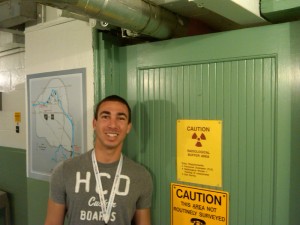
DOE Fellow Janty Ghazi inside the B reactor building at the Hanford Site
Tags: Internships
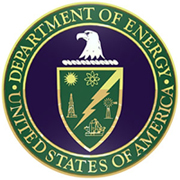
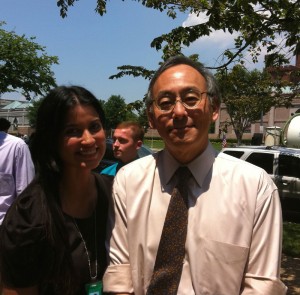
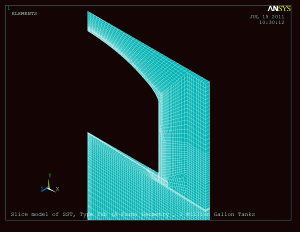
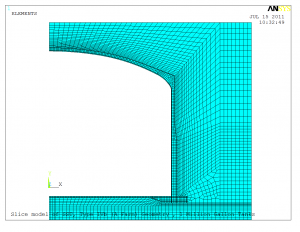
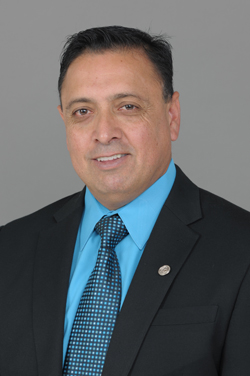 I wanted to let you know about an incredible opportunity made possible to FIU minority students thanks to the sponsorship and funding of the US Department of Energy’s Office of Environmental Management (DOE-EM). In an effort to overcome the challenges of an aging workforce, DOE-EM is actively and aggressively targeting college students across the US to enter DOE’s workforce.
I wanted to let you know about an incredible opportunity made possible to FIU minority students thanks to the sponsorship and funding of the US Department of Energy’s Office of Environmental Management (DOE-EM). In an effort to overcome the challenges of an aging workforce, DOE-EM is actively and aggressively targeting college students across the US to enter DOE’s workforce.